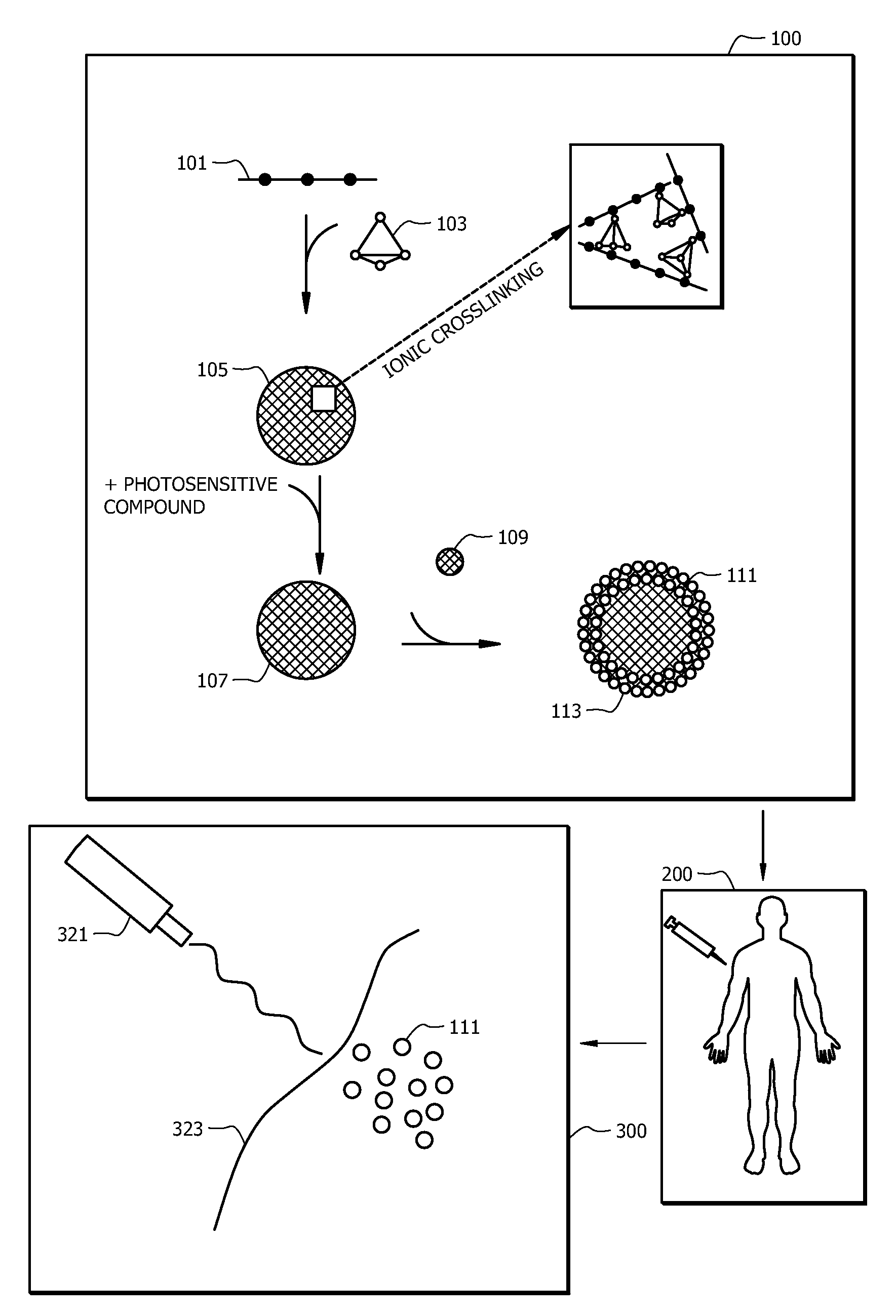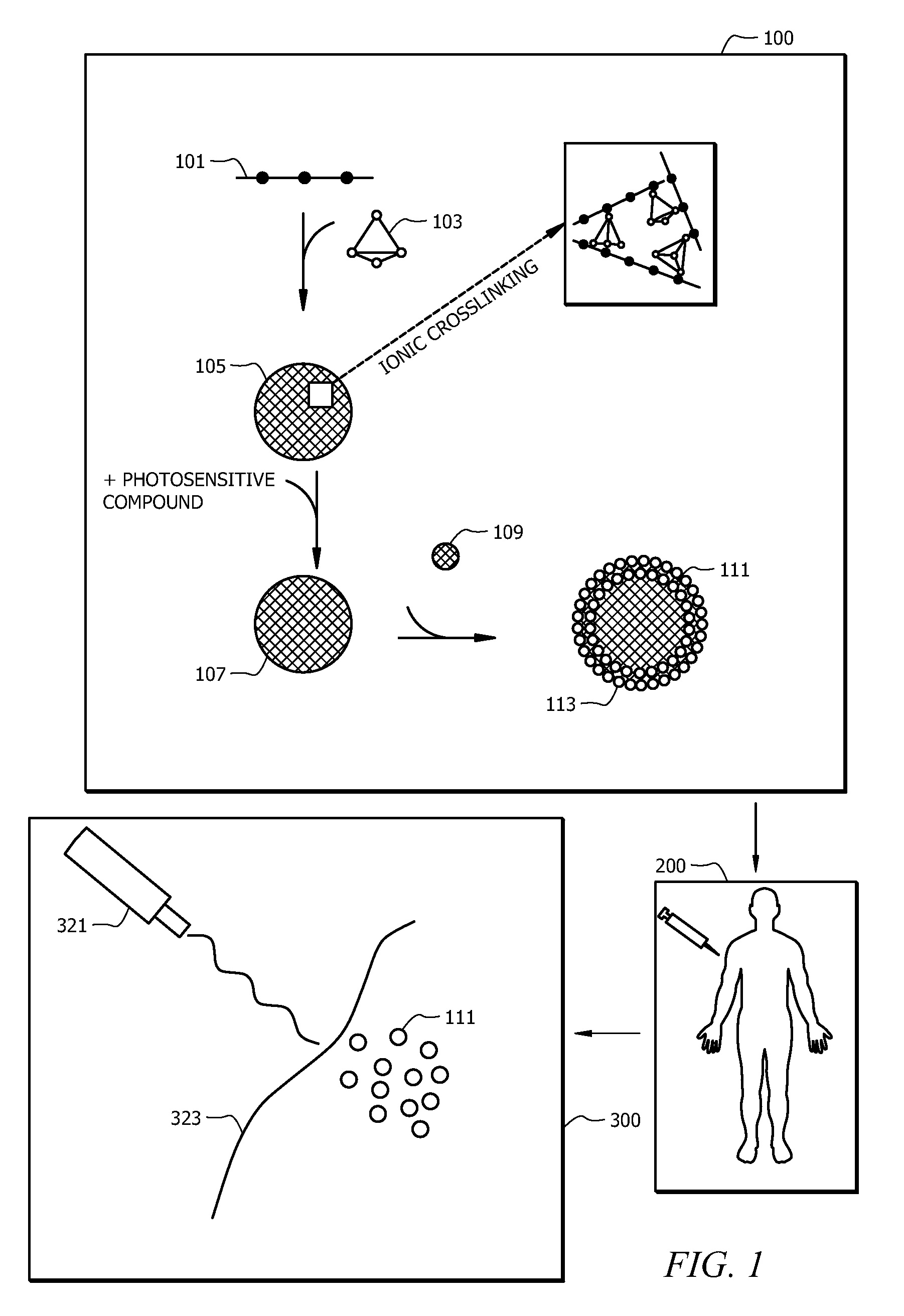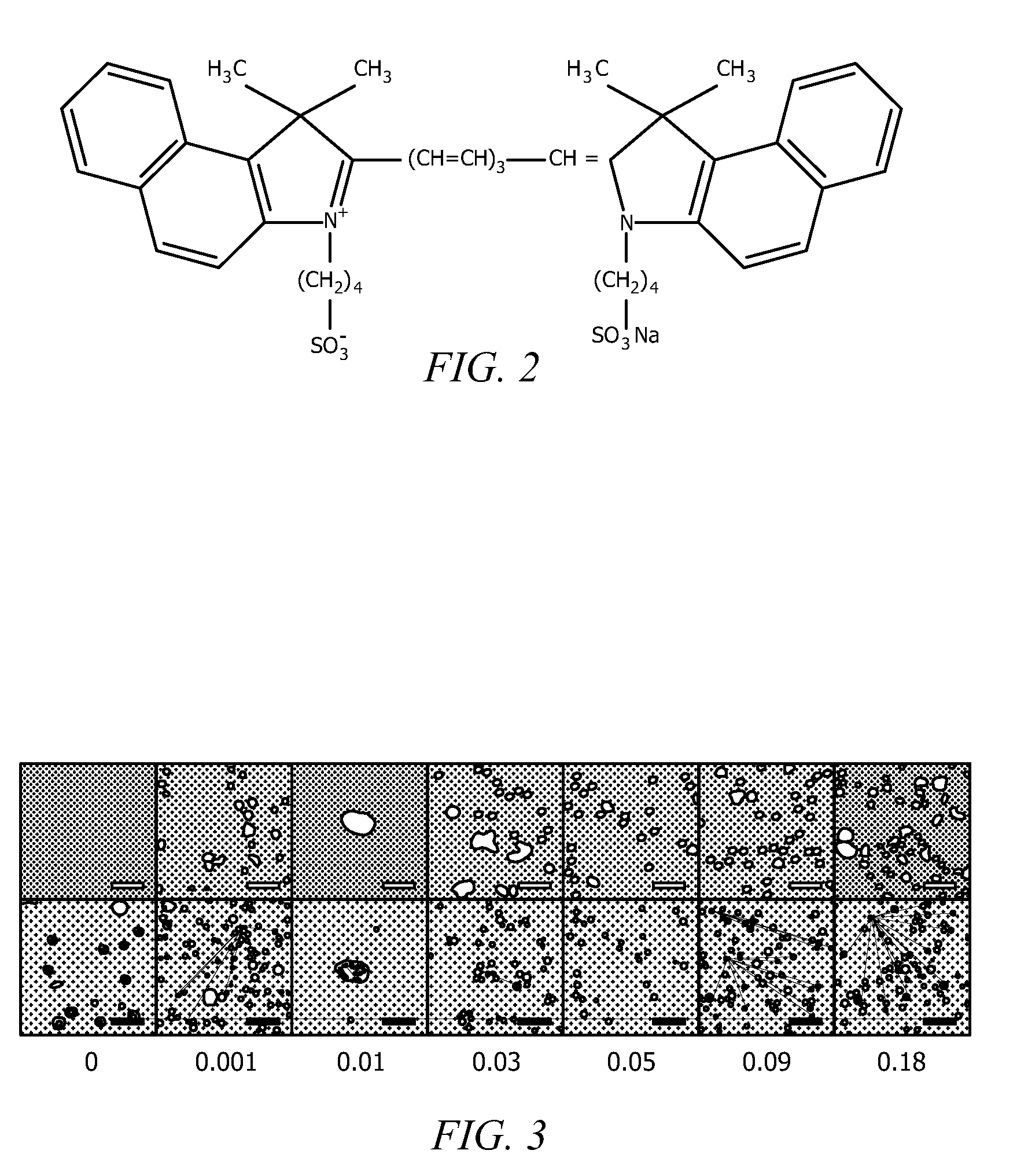Charge-assembled capsules for phototherapy
- Summary
- Abstract
- Description
- Claims
- Application Information
AI Technical Summary
Benefits of technology
Problems solved by technology
Method used
Image
Examples
examples
Methods and Materials
Materials
[0055]Poly(allylamine hydrochloride) (“PAH,” 70 000 g / mol, chloride counterion, Sigma-Aldrich), disodium hydrogen phosphate heptahydrate (Na2HPO4.7H2O, 99.5%, Fisher), and indocyanine green (ICG, ˜90%, Sigma-Aldrich) were used as received. A nitric acid solution (70 wt % HNO3, Fisher Science) was diluted to 2 wt %. Stock solutions of PAH, Na2HPO4, and ICG (1 mg / mL) were prepared using deionized water (18.2 MΩ, Barnstead Nanopure Diamond System) and stored at 4° C. before use. Silicon oxide NPs (13 nm diameter) were available as an aqueous colloidal suspension (20.5 wt %, pH 3.4, Snowtex-O, Nissan Chemicals) and used without further purification. Phosphate buffered saline (PBS) solution (0.01 M PO4 3-, 0.138 M NaCl, 0.0027 M KCl, pH 7.4) was prepared by using premade powder (Sigma-Aldrich).
Synthesis
[0056]Nanoparticle-assembled capsules (NACs) were synthesized by combining the PAH solution (2 mg / mL, 20 μL) with the Na2HPO4 solution (0.01 M, 120 μL) at roo...
PUM
| Property | Measurement | Unit |
|---|---|---|
| Length | aaaaa | aaaaa |
| Nanoscale particle size | aaaaa | aaaaa |
| Wavelength | aaaaa | aaaaa |
Abstract
Description
Claims
Application Information
 Login to View More
Login to View More - R&D
- Intellectual Property
- Life Sciences
- Materials
- Tech Scout
- Unparalleled Data Quality
- Higher Quality Content
- 60% Fewer Hallucinations
Browse by: Latest US Patents, China's latest patents, Technical Efficacy Thesaurus, Application Domain, Technology Topic, Popular Technical Reports.
© 2025 PatSnap. All rights reserved.Legal|Privacy policy|Modern Slavery Act Transparency Statement|Sitemap|About US| Contact US: help@patsnap.com



